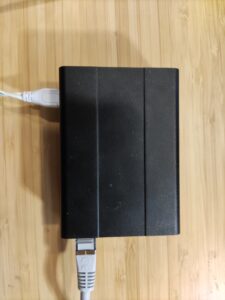Sevana AQuA: Promising Audio Quality Assessment for AMR-WB, EVS-WB, and EVS-SWB Codecs
Introduction
In the ever-evolving landscape of telecommunication technologies, efficient audio compression codecs play a pivotal role in delivering high-quality voice communication over limited bandwidth. The quality of audio codecs is traditionally assessed through Mean Opinion Score (MOS) testing, which involves subjective human evaluations. However, the need for automated, reliable, and consistent methods for evaluating codec quality led to the development of Sevana AQuA (Audio Quality Assessment) – a groundbreaking solution capable of differentiating quality based on MOS scores among various codecs, including Adaptive Multi-Rate Wideband (AMR-WB), Enhanced Voice Services Wideband (EVS-WB), and Enhanced Voice Services Super-Wideband (EVS-SWB).
The Significance of Codec Quality Assessment
As telecommunication providers strive to deliver crystal-clear voice quality over diverse networks, codec development has become a critical aspect of ensuring optimal user experience. The efficient utilization of bandwidth, reduction of latency, and preservation of voice naturalness are among the key parameters codec developers aim to enhance. Traditional subjective testing involves a panel of human listeners providing subjective quality scores, often measured by MOS. However, this process can be time-consuming, expensive, and potentially inconsistent due to variations in human perception.
Enter Sevana AQuA
Sevana AQuA represents a paradigm shift in codec quality assessment by leveraging advanced algorithms to automatically evaluate audio quality. The software analyzes audio samples encoded using different codecs, such as AMR-WB, EVS-WB, and EVS-SWB, and assigns them MOS scores based on a robust computational model. This model emulates human auditory perception, enabling AQuA to provide objective and repeatable quality assessments.
Key Features and Functionalities
- Objective Quality Scoring: Sevana AQuA employs advanced signal processing techniques and perceptual models to generate objective quality scores for each codec. These scores are highly correlated with human-perceived quality, making them an accurate representation of user experience.
- Codecs Comparison: The software enables direct comparisons of codec performance. Telecommunication companies and developers can assess how different codecs perform under varying network conditions, aiding them in selecting the most suitable codec for their requirements.
- Scalability and Efficiency: Sevana AQuA’s automated assessment eliminates the need for extensive human listener panels, reducing time and costs associated with quality testing.
- Wide Applicability: The software is versatile, accommodating different codecs and network conditions. It can be integrated into the codec development pipeline or used to assess codec performance in real-world scenarios.
- Continuous Improvement: Sevana AQuA can be fine-tuned and updated as new codecs are introduced or existing ones are optimized. This ensures that the evaluation remains up-to-date with technological advancements.
Conclusion
Sevana AQuA represents a pivotal advancement in the field of audio codec quality assessment. By offering automated, objective, and reliable MOS scoring for codecs such as AMR-WB, EVS-WB, and EVS-SWB, the software empowers telecommunication companies, developers, and researchers to make informed decisions about codec selection and optimization. As the demand for high-quality voice communication continues to grow, Sevana AQuA plays a crucial role in enhancing user experience across various networks and devices.
